July 14, 2018
Highlights from SGaan Kinghlas-Bowie Seamount Marine Protected Area
Estimated reading time: 0 minutes
BY: Jennifer Whyte
Topics: Protect Marine Habitat
SGaan Kinghlas-Bowie Seamount Marine Protected Area (MPA) is made up of three submarine volcanoes called, SGaan Kinghlas-Bowie (SK-B), Hodgkins and Davidson (Pierce).
As the best known seamount in Canada, SGaan Kinghlas-Bowie Seamount, is also the most well surveyed, especially in the shallower areas. Much of our scientific understanding of seamounts are drawn from research conducted in this area. On the Northeast Pacific Seamount Expedition, the scientists are expanding our understanding of this MPA. Diving from the depths to the shallows, they have added incredible details to our maps and documented the diversity and abundance of life there, thanks to the technology available on the Ocean Exploration Trust’s ship, the Nautilus.
Over several days the team has been diving with a remotely operated vehicle (ROV). Dives last for 12 hours, during which the ROV collects samples and visually documents life on the seafloor up to two kilometres deep. It’s been an incredible adventure and here are some of the most remarkable things we’ve seen so far.
The most famous seamount
Located 180 kilometres offshore of Haida Gwaii, SGaan Kinghlas-Bowie Seamount extends up into the photic zone, an area which receives energy from the sun. All other known seamounts in Canada do not reach to these shallower depths. In total, more than 158 taxa, or groups of organisms, have been observed on SK-B.
Painting the ocean
While surveying this area, scientists have been painting mosaics! This means they are taking photos of a large 10m x 10m area in a grid formation so that they can be stitched together to form a large single image. These mosaic photos capture all the incredible species in a single high-definition image, allowing researchers to zoom in to study in great detail the species both big and small that make up these diverse communities. See how many species you can spot in this photo which is part of one of these mosaics.
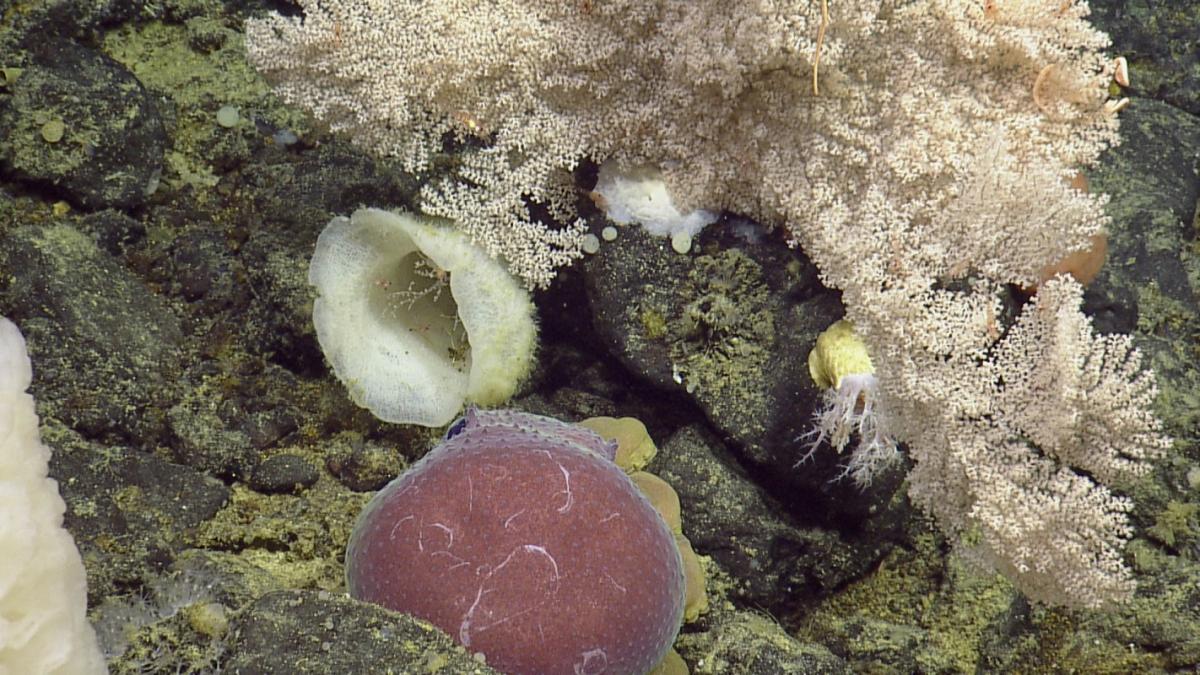
Photo Credit: Ocean Exploration Trust/Northeast Pacific Seamount Expedition Partners
Can you spot them all? Look close for an octopus, glass sponge, soft coral and sea cucumber.
Pelagic siphonophore
While on Hodgkins Seamount, a siphonophore floating in the water column was collected. These colonial animals are related to corals and jellyfish. They produce a gooey substance as a means of protection, which we observed first hand. Once we sampled this siphonophore, the remotely operated vehicle was covered in a trail of its goo.
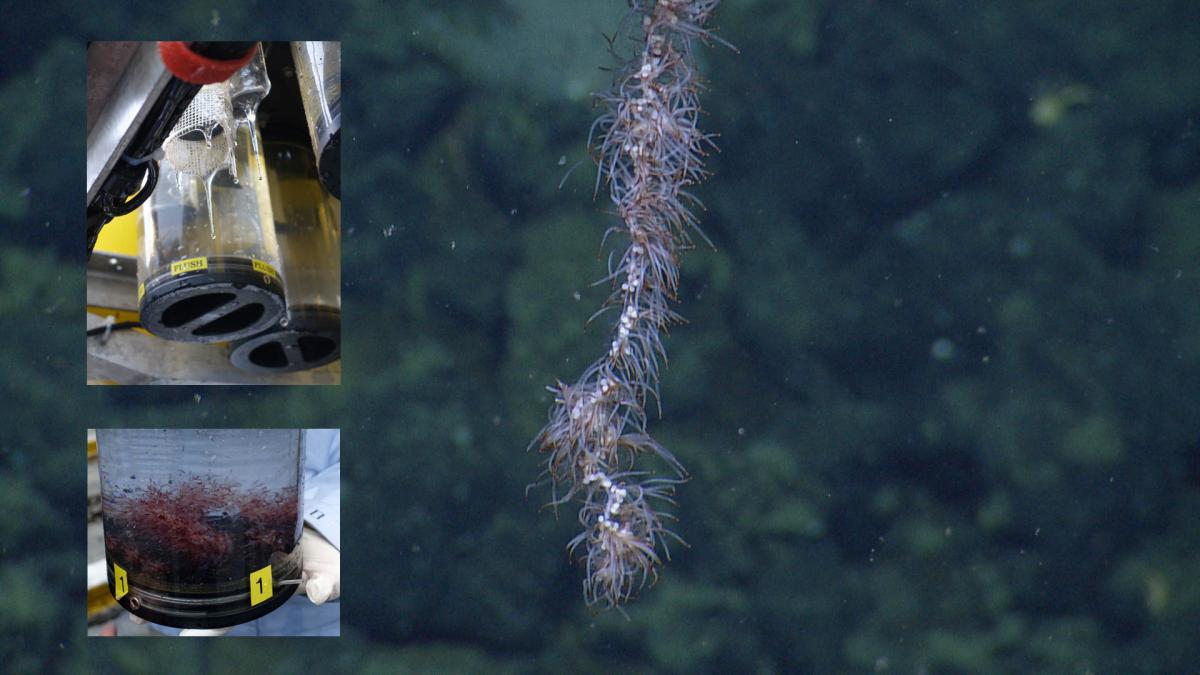
Photo Credit: Ocean Exploration Trust/Northeast Pacific Seamount Expedition Partners
The scientists were so excited about this sample that they even tasted the goo!
Nudibranch dinner party
In the photo below, the big sponge above the fish has white lines on it, these are ‘tracks’ left by the nudibranchs that are eating it. The white circles on the sponge are the nudibranchs, how many do you see?
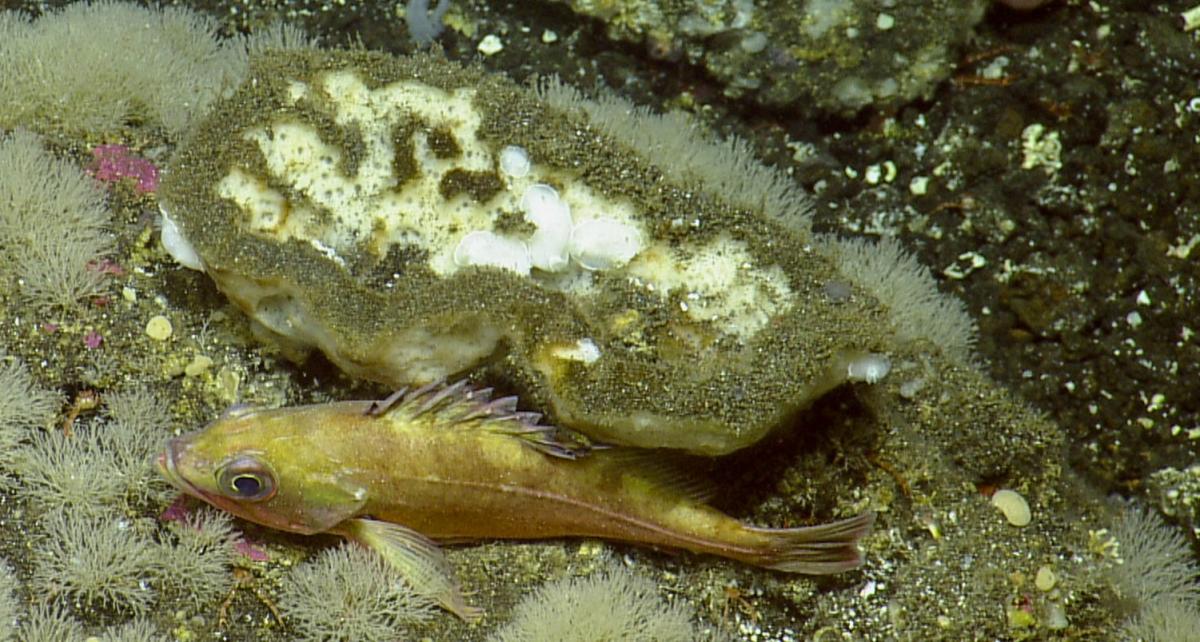
Photo Credit: Ocean Exploration Trust/Northeast Pacific Seamount Expedition Partners
Snail birthday
An Oregon hairy triton snail can be seen here laying its eggs. The half circle around the snail, are the eggs. After being laid, the snail will move off, the eggs will develop in their current location for a while then disperse into the water as plankton.
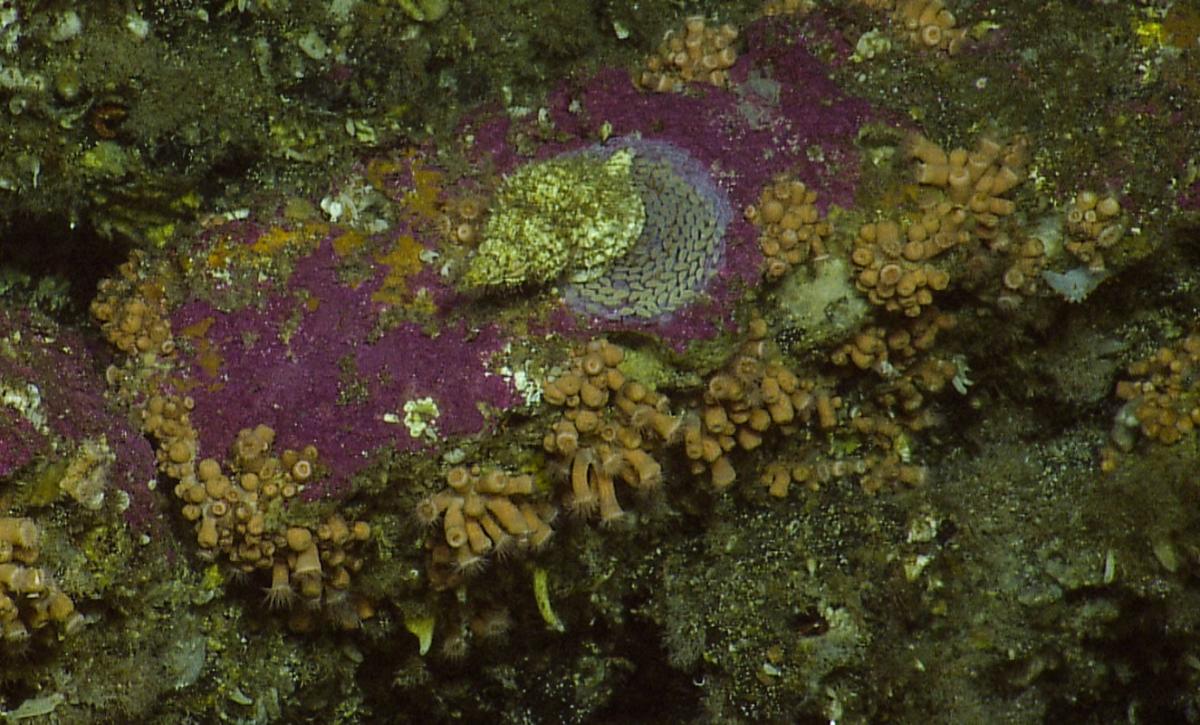
Photo Credit: Ocean Exploration Trust/Northeast Pacific Seamount Expedition Partners
A piece of history
This concrete block was placed on SK-B during a survey in 1969. Now rediscovered, it will provide a permanent marker for future observations. Beginning with these images we can see how much life has grown on it in almost 50 years.
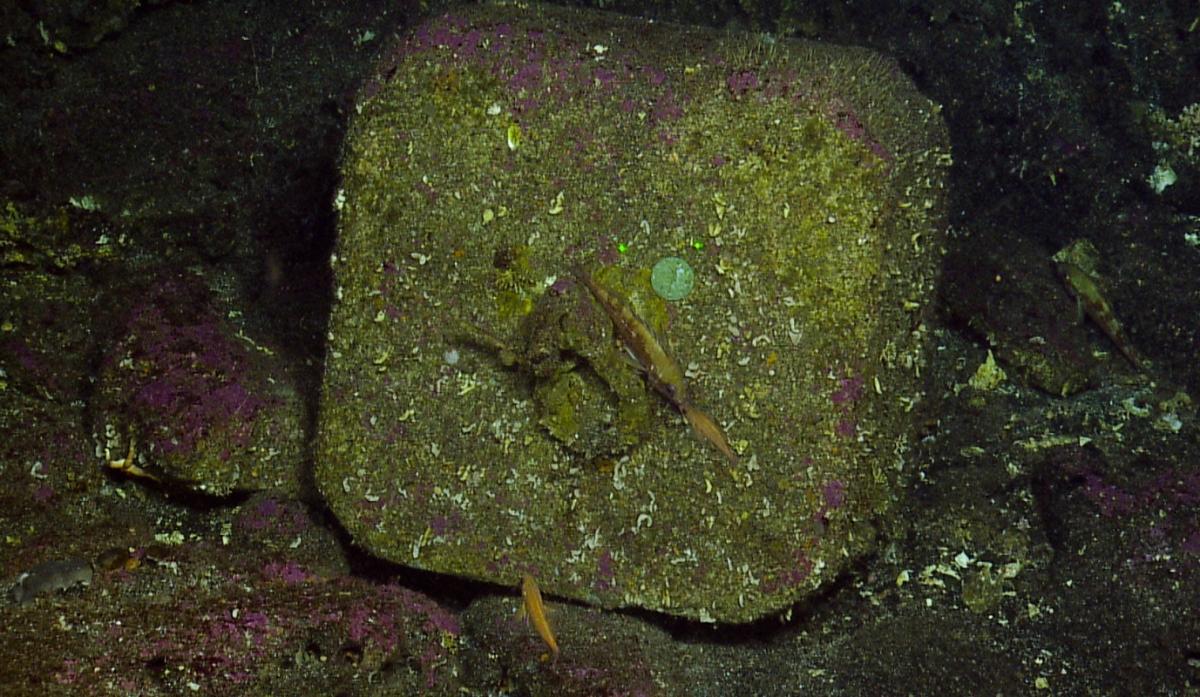
Photo Credit: Ocean Exploration Trust/Northeast Pacific Seamount Expedition Partners
Pregnant rockfish
Lots of rockfish have been documented in this area, and we were most excited to see this pregnant mommy fish! These bigger and older females produce large broods of baby fish; a good sign for a healthy fish population. Unlike many fish, they give birth to live young. Look how big this fish belly is!
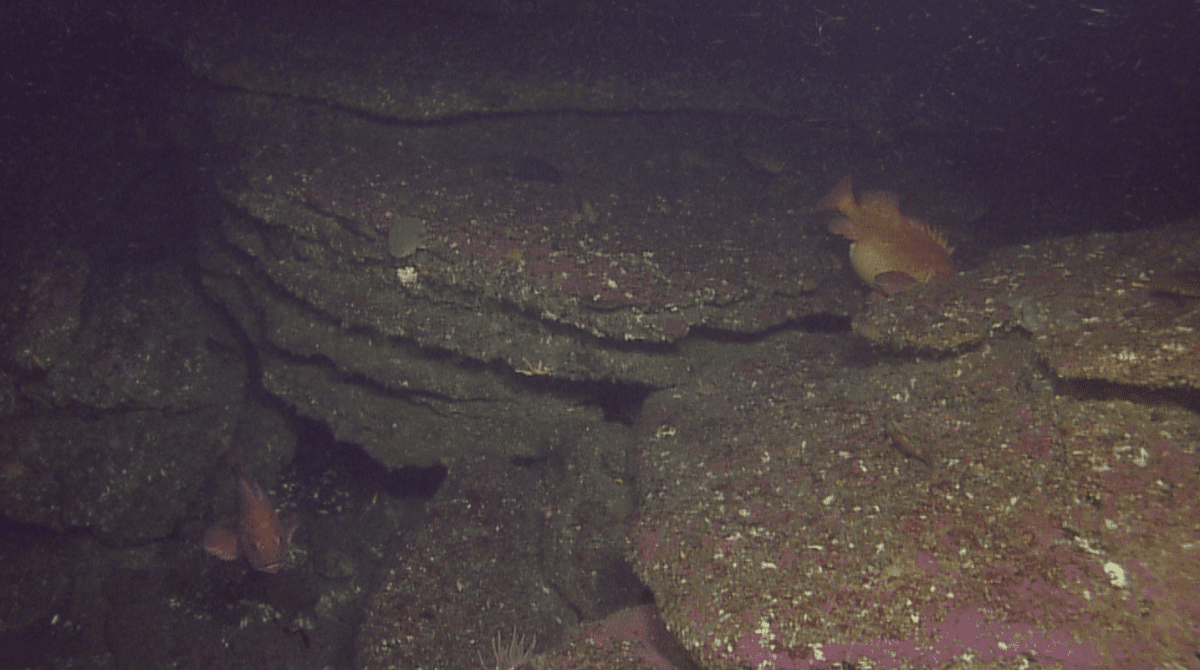
Photo Credit: Ocean Exploration Trust/Northeast Pacific Seamount Expedition Partner
Watch the expedition live and follow daily updates from the team at ProtectOceans.ca

